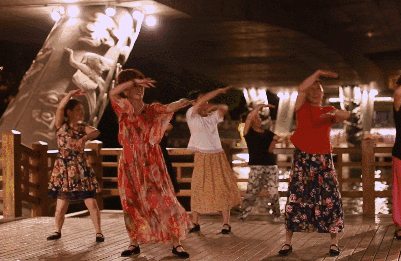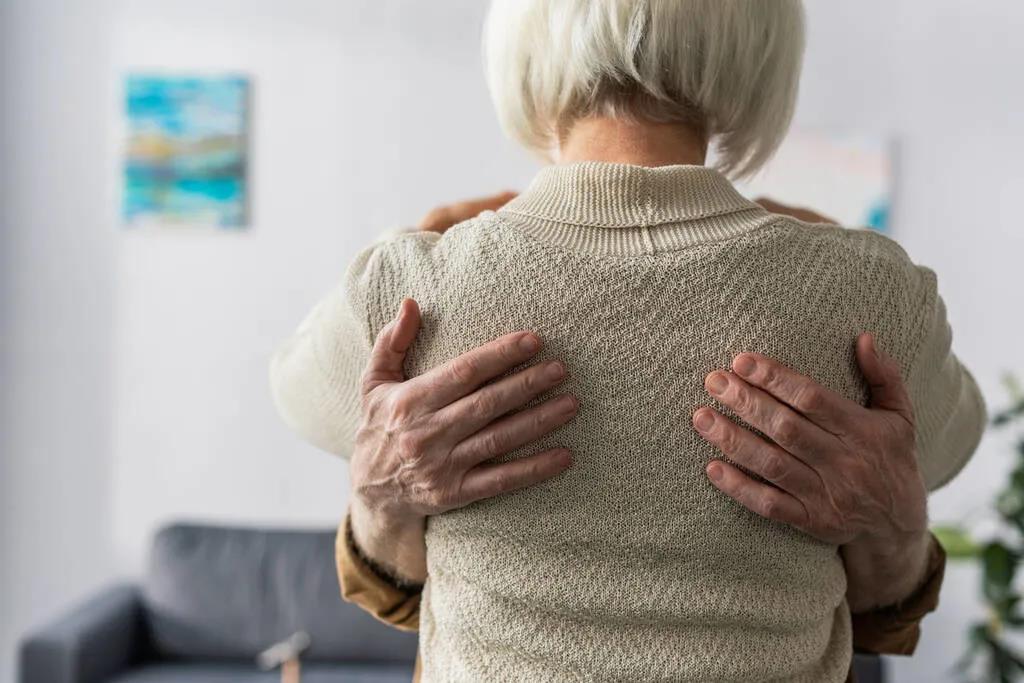
Dance is one of the oldest art forms. Long before language was born, people used it to communicate feelings and celebrate victory.
Nowadays, from the rhythmic “square dance” in the parks of the community to the sweaty “fat burning dance” in the gym, dance has become an active way of fitness.

The World Health Organization calls dancing “the best sport in the world”. At the 142nd session of the WHO Executive Committee, the participants danced for more than two minutes with the accompaniment, which was intended to encourage people to exercise actively at work.

“Dancing” collectively at the WHO high-level meeting to decompress
Recently, the latest research results published online in the American Menopause magazine show that performing dance exercises 3 times a week can not only improve the blood lipid status and physical fitness of women after menopause, but also enhance their self-esteem.

Keep dancing, physical indicators change
In a study of postmenopausal women, researchers from the State University of Sao Paulo in Brazil found that after insisting on dancing three times a week, 90 minutes each time for 16 weeks, these changes will occur in the human body:
■ Triglycerides increased from an average of 156.5 mg/min to 131.5 mg/dL;
■ High-density lipoprotein cholesterol (good cholesterol) increased from an average of 55.4 mg/dL to 60 mg/dL;
■ Physical coordination, agility, balance, gait, muscle strength, etc. have all been improved;
■ Due to the improvement of their physical condition, their self-esteem has also been improved.
Researchers said that although dance fitness is dominated by women, there are no gender differences in many of its benefits.
Enhance brain function
The Spanish newspaper Abbeza published an article in June this year that as long as you keep dancing for 6 months, your brain function will be improved. The specific performance is to effectively enhance the brain’s perception ability, spatial memory ability, improve memory, problem-solving ability, and inhibit interference. Information capacity.
Help lower blood sugar
The National Institutes of Health recommends that people with diabetes should exercise for about 150 minutes a week, and dancing is one of the good choices.

Generally speaking, dancing can burn up to 300~800 kcal of calories for 1 hour, and no matter what type of dance, it can help patients achieve their sugar control goals.
Slow down Parkinson and the idiot
A joint study by the University of York in the United Kingdom and the Parkinson’s Disease Association in the United States has shown that dancing for 1.5 hours a week for patients with mild and moderate Parkinson’s can significantly slow down the progression of the disease, and also improve negative emotions such as cognitive impairment, hallucinations, depression and anxiety.
In addition, the Einstein College of Medicine in the United States compared reading, writing, doing puzzles, playing poker, playing musical instruments and various sports, and found that the best exercise to prevent Alzheimer’s disease is dancing.
Reduce the risk of falls
In October 2020, a joint study conducted by the University of Zurich in Switzerland and the Harvard University Chen Zengxi School of Public Health and other institutions showed that dance significantly improved the balance ability, mobility and lower limb muscle strength of the elderly.
Elderly people who do dance exercises more than once a week can reduce the risk of falls by 37%; if the frequency is 3 or more times a week, the risk of falls can be reduced by 53%.
Improve self-care ability
In 2019, the Tokyo Metropolitan Institute of Geriatrics in Japan found that compared to jogging and cycling, dance is the only exercise that can help the elderly improve their ability to take care of themselves.
Persistent dancers were 73% less likely to need help from others in daily activities such as walking, bathing, eating, dressing, and going to the toilet.
How to jump to achieve the exercise effect?
As long as you move, you can exercise your cardiopulmonary function. If it is not too intense, dancing square dance can relax the muscles, relieve the back pain of the elderly, and improve muscle strength and physical coordination.

Different dance types have different exercise emphasis, but no matter what kind of dance, three key factors determine its exercise effect, namely intensity, duration, and frequency.
Intensity: Heart rate 160~180 beats/min
This aspect is usually measured by heart rate, which should be controlled at 60% to 80% of the maximum heart rate during exercise.
It is generally controlled at 160-180 times/min for young people, 140-150 times/min at the age of 40 or 50, and the elderly should be controlled lower.In terms of personal experience, if you can’t communicate with others smoothly during exercise, it means that the intensity has reached medium or higher.
Duration: within 1 hour per time
Duration mainly refers to the time of a single continuous dance.
A study by Yale University in the United States involving more than 1.2 million adults has shown that 30 to 60 minutes of exercise can effectively reduce psychological stress, 45 minutes is the best exercise duration; if it lasts for more than 90 minutes, the benefits to mental health will be much smaller; Once more than 3 hours, it may even have a negative impact on mental health.
Therefore, it is recommended to dance within 1 hour. People with better physical fitness or younger age can hold on for 1.5 hours after taking a break.
Frequency: Dance 3~5 times a week
Frequency emphasizes regularity, because any exercise must be persevering in order to be effective.
According to the recommendations of aerobic exercise, you can dance 3 to 5 times a week, which is also the frequency to achieve the best mental health, at least 2 months.
5 details to avoid dancing injuries
In various aerobic exercises, dancing is economical and practical. But even for simple square dances, sports injuries often occur.
In 2016, a study of square dance lovers in Xi’an found that sports injuries are more common.
The main types of injuries are sprains, muscle strains, lumbar muscle strains, patella strains, joint ligament injuries, etc. The main parts are the waist, knee joints, ankles, neck, and shoulders.
According to analysis, the main causes of sports injuries are insufficient warm-up activities (66.02%), excessive partial load (39.32%), technical errors (30.58%), fatigue (30.1%), and discomfort in clothing (33.01%).
In response to the above problems, in addition to focusing on controlling the intensity and duration of exercise, experts also suggest improvements from the following aspects.
Time: afternoon or evening
It is best to arrange it in the afternoon or evening, while avoiding haze, rain, snow, strong wind and other weather; do not dance after an empty stomach, a meal or drunk to avoid accidents.
Site: flat and non-slip place
Don’t dance in crowded places. It’s best to choose a place with smooth air, fewer people, and a flat and non-slip floor.
Warm up: 5~10 minutes
You should warm up for 5-10 minutes before dancing. You can bend your knees, press your legs, bend your waist, turn your ankles, stretch your limbs, and simply bounce.
After exercise, you should also relax, such as shaking your legs, stretching your waist, etc., to promote the excretion of metabolites in the body, so as to avoid muscle soreness.
Clothing: loose underwear + sports shoes
Don’t wear hard-soled shoes and slippers when dancing to prevent spraining your feet; choose loose-fitting, cotton-padded clothes to ensure unobstructed blood circulation and facilitate sweat absorption.
Elderly people: avoid difficult movements
The squatting, jumping, and rotating movements in dance have certain requirements for physical coordination and flexibility.
Elderly people with declining physical function may not be able to withstand such movements. It is recommended to avoid movements such as large neck twisting, hip rotation, lower waist, and circular movements and head downward movements.
People with poor knee joints should also be cautious when doing squats.
Comments